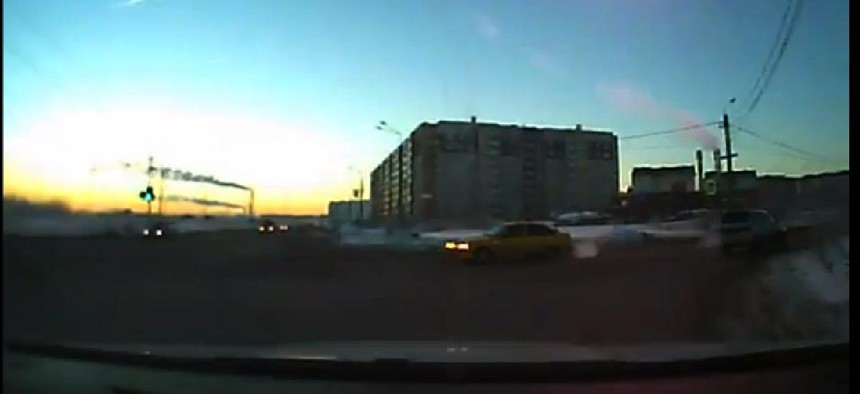
YouTube
Meteorite Strikes Are Actually Quite Common
Earth gets hit up to 10 times a year, experts say.
Early this morning, a meteor exploded in the sky above Russia, causing a shockwave that blew out windows, crippled communications infrastructure, and injured hundreds of people. The blast was terrifying for the people who witnessed it, and were touched by it, in person; but it's scary, too, for anyone who lives on Earth: Screaming, scorching, flaming objects falling suddenly from the sky are pretty much the stuff of humanity's collective nightmares.
So how common is that experience? How often does Earth experience the kind of meteorite strike that Russia just endured?
More common than you might think, actually. Cosmic debris is, after all, fairly common around Earth. (When pieces of space debris -- usually parts of comets or asteroids -- are on a collision course with Earth, they're called "meteoroids"; when meteoroids enter the Earth's atmosphere, they're called "meteors.") Most meteors burn up in Earth's atmosphere before they reach the ground. But when one of these objects doesn't burn up -- if it survives entry long enough to strike Earth -- it becomes a "meteorite."
A meteorite seems to be what struck Russia this morning. And meteorite strikes take place, experts say, around five to 10 times a year. Most of them, fortunately, have small impacts. But even large impacts, like the one Russia just experienced, occur about every five years, Addi Bischoff, a mineralogist at the University of Muenster in Germany, told the AP. We just don't learn much about them because most of the strikes take place in uninhabited areas where they don't cause injuries or infrastructural damage.
Read more at The Atlantic.






